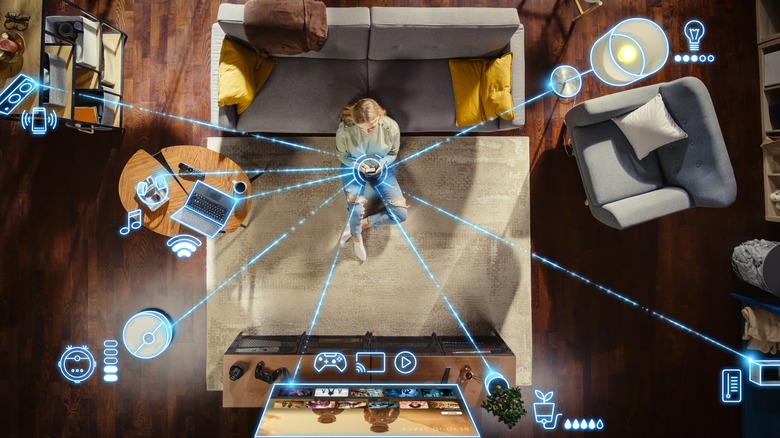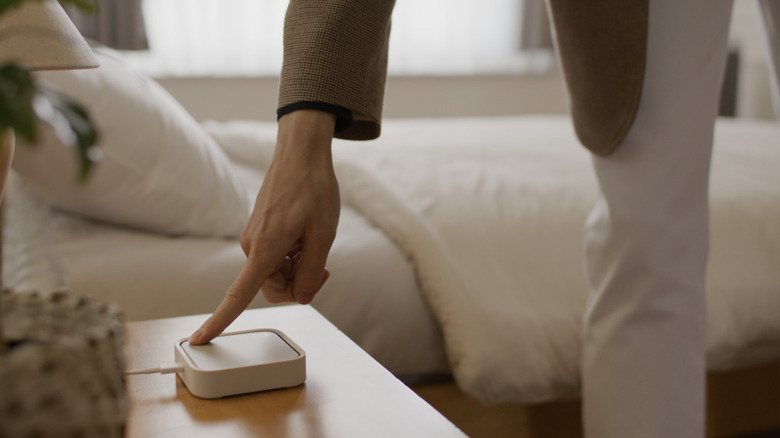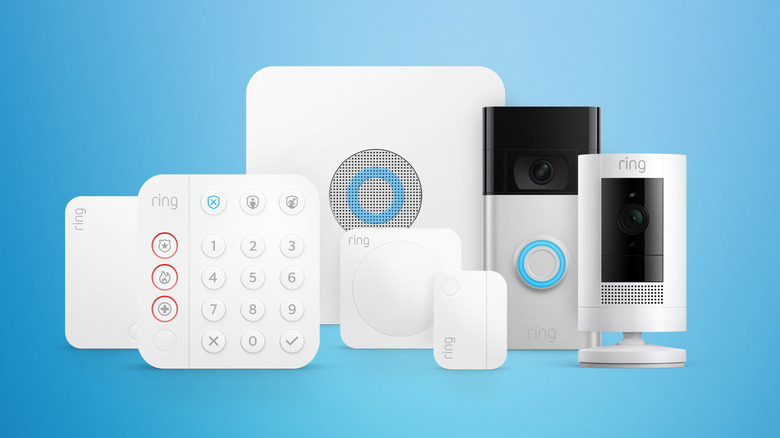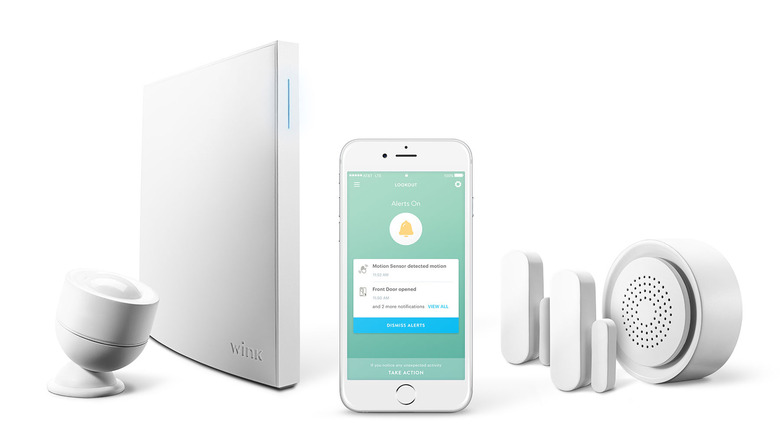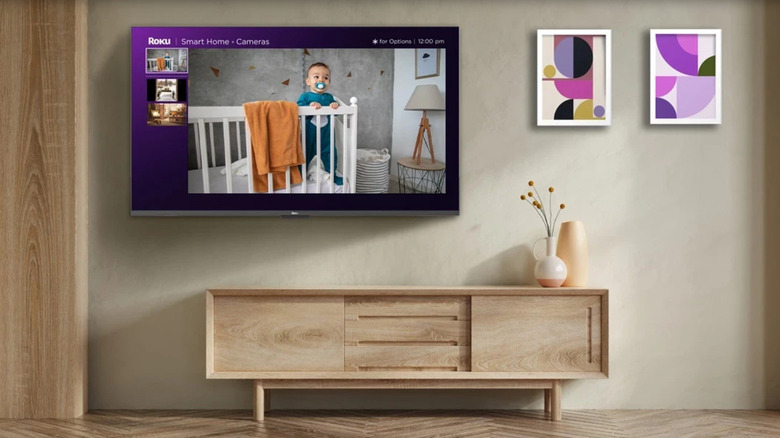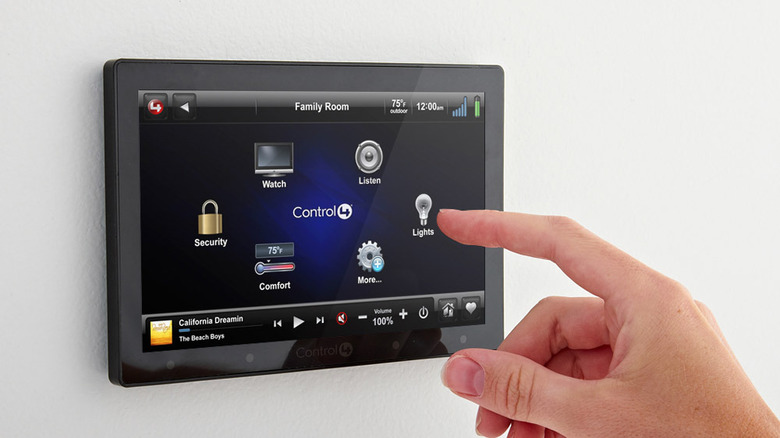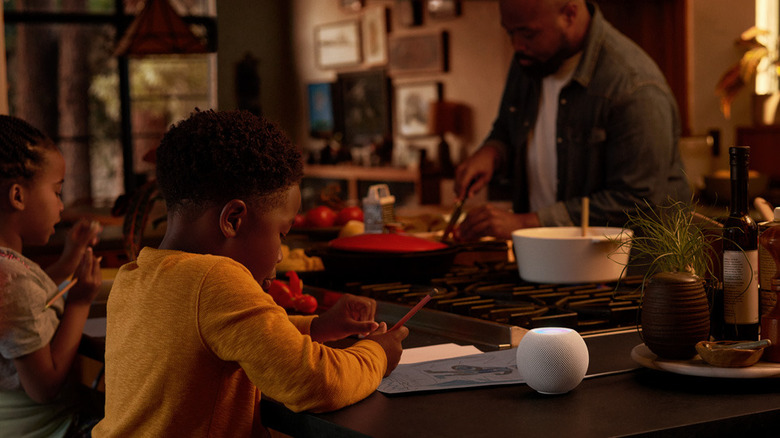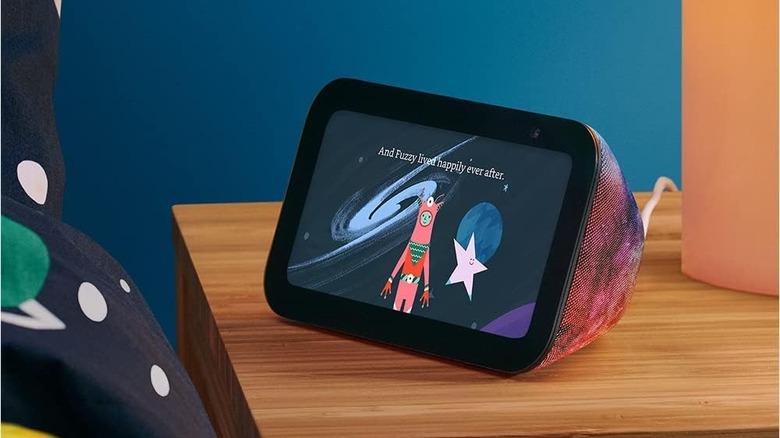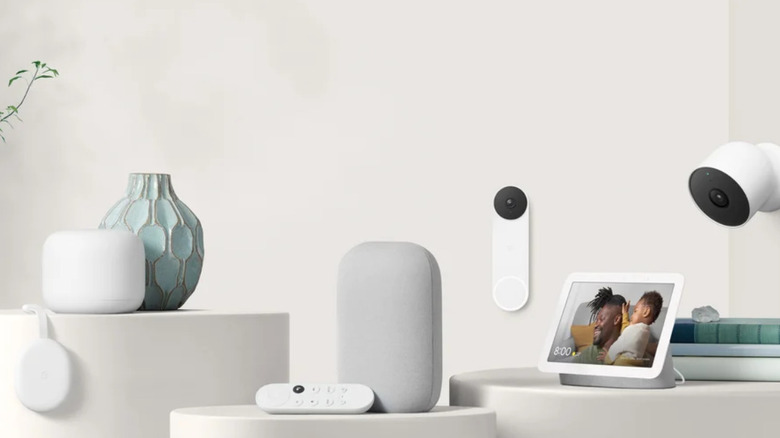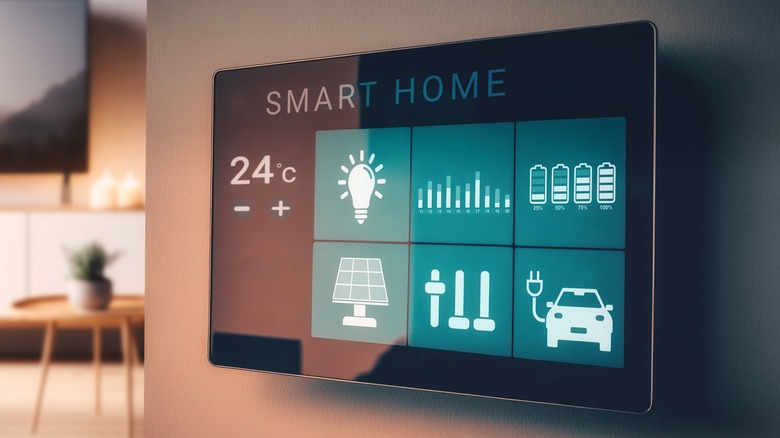8 Of The Best Home Automation Systems In 2024, Ranked
Just a few decades ago, smart houses were the stuff of fiction. We imagined a future with intelligent structures (some of which took a turn for the wicked) capable of automating parts of our everyday lives and ramping up convenience. Slowly and almost without fanfare, that fiction became a reality. Today, it's entirely uneventful for friends and family to have "smart" devices connected throughout their homes.
If you've been sleeping on making the switch and finally want the smart home of your dreams, there are many platforms to choose from. Browsing store shelves or online marketplaces can be overwhelming with all of the choices on offer, but piecing together a smart home isn't as complicated as it might look.
No matter which smart home hub and what connected devices you choose, the end result will be more or less the same. You can connect smart lights, enjoy the pros of smart blinds and curtains, adjust the temperature with smart thermostats, and rest easier with smart home locks and security systems — and control it all with your voice, smartphone, or smart home dashboard. The key differences between platforms, and the most important consumer considerations, are how you interface with your smart home and which devices and brands it can connect to.
8. SmartThings Station
SmartThings is Samsung's solution to the smart home question. Instead of being a mounted tablet screen, like many competing smart home hubs, the SmartThings Station is a small, faceless square with a single button. You'll do most of your smart home management through the SmartThings app, but you can trigger actions or routines by tapping, double-tapping, or pressing and holding the button on the hub.
SmartThings connects to a wide range of SmartThings-branded and third-party smart home devices. It's capable of managing lights, home security systems, blinds and curtains, robotic vacuums, and more. It also connects to your other devices, like your smartphone or Samsung Galaxy earbuds. If you lose them, your SmartThings hub can help you find them.
In addition to manually controlling individual devices through the app, you can create routines and trigger several actions with a single command. When you're ready for bed, just trigger your bedtime routine to turn down the lights, lock the doors, turn on background music, and whatever else you need to wrap up the day. As an added bonus, the SmartThings hub doubles as a 15W wireless phone charger, and you can even set your bedtime routine to trigger once you start charging your phone at night.
7. Ring Whole Home Deluxe Kit
The typical smart home system spends most of its time turning lights on and off and adjusting the thermostat, but the Ring Whole Home Deluxe Kit is designed with home security in mind. It won't help you change the channel or remind you to pick up milk, but it could help keep your home safe.
Ring offers smart home security kits in several tiers at a variety of prices, starting with the simple video doorbell for under $200 and ending with the Whole Home Deluxe Kit, which normally retails for $829. The financial barrier to entry is moderately steep, but it comes with everything you need, including the Video Doorbell Pro 2, a floodlight camera, two keypads for arming and disarming your system, 8 door and window sensors, and 2 motion sensors.
The kit runs through the Ring Alarm Base Station, which includes a built-in siren and battery backup for when the power goes out. You'll also receive a range extender to ensure the base station syncs up with your connected devices in distant parts of your home. You can add extras including flood, freeze, and outdoor contact sensors, as well as the brand's great smart lights, a la carte. Importantly, using the system requires a subscription to Ring Protect Pro which you'll have to pay for after a 30-day free trial.
6. Wink Hub
Wink is a lesser-known smart home brand, but it can hang with the big boys. The Wink smart home hub is compatible with third-party smart home gadgets and the company also offers a wide range of its own devices. There are three starter kits to choose from, some of which are unconventional and expand the definition of what a smart home can be.
The Wink Bright kit is the company's most predictable, offering a smart home hub and a couple of smart lights. If you're looking for a low-lift way to dip your toe in the smart home pool, the Bright kit is probably the one for you. The Wink Lookout kit is security-focused, including a hub and a couple of door or window sensors. The Wink Leak Protection kit is Wink's most unusual and most interesting — it comes with a leak sensor and an automated shutoff valve. In the event of a leak, it will shut off the water to prevent continued damage.
Once you've got your starter kit, you can add extra devices to increase the functionality of your smart home system. The Wink hub can control a wide selection of connected devices including motion sensors, switches, outlets, video doorbells, cameras, smoke and carbon monoxide detectors, and more.
5. Roku Smart Home
Believe it or not, Roku does more than just streaming TV. The same platform that houses your Netflix and Max subscriptions can also serve as a one-stop smart home dashboard. Roku's smart home starter kit is an entry-level package containing an indoor camera, two smart outlets, and two smart light bulbs capable of changing color so you can set the mood.
You'll notice there's no smart home hub included in the starter kit. You can control your entire smart home system from the Roku smart home app or with voice controls using Roku Voice, Alexa, or Google Assistant. Once you get your starter kit set up, you can add additional lights, switches, outlets, and security devices.
Roku also offers a smart home security system with a Roku Monitoring Hub, entry sensors, and a keypad for arming and disarming the system, and you can add as many indoor and outdoor cameras as you like. Leaning into Roku's affinity for television, you can watch your security camera feeds right on your television, transforming your living room into a security HQ.
4. Control4
This smart home system is not for the faint of heart. Rather than the ad-hoc smart home systems you'll find online or at big box stores, Control4 feels more like the integrated smart home systems we dreamed of decades ago. And it comes with a price tag to match.
Most smart home systems come in pre-arranged kits or get put together piecemeal, adding a light here and a camera there. Control4 is meant to be designed in concert with and installed by a professional. Purchasing a system involves visiting a local showroom and working with a dealer to design a bespoke system for your home.
Control4 offers lighting, home security, home theater, in-home audio, and round-the-clock customer service, among other features. You can control your system from a smartphone app or from a variety of hubs including wall-mounted tablet screens. The interface allows you to control your entire home from anywhere, but you can also create room-specific dashboards to put your favorites right where you need them most. Prices vary depending on the size of your home and the number of connected gadgets you want, but you can expect the invoice to total in the thousands.
3. Apple HomeKit
Apple's smart home system is a collection of connected devices running through the Apple Home app, which comes standard on your iPhone or iPad. Apple offers a diverse ecosystem of smart home gadgets including security cameras, doorbells, lights, climate control devices, switches, outlets, sprinklers, speakers, locks, and more.
Once connected, you can control your smart home devices from the Home app, which is conveniently located on your iPhone or iPad's Control Center. Alternatively, you can use an Apple HomePod, HomePod Mini, or Apple TV as a smart home hub.
The Home app organizes your devices into intuitive categories like lights, security, and climate. It will also group devices by room so that you can easily see the devices in your immediate surroundings all in one place. If you have connected security cameras, you can see up to four live feeds in the app and because all of this is built on top of Apple infrastructure, you can take advantage of useful iOS Shortcuts to trigger multiple devices or actions with a single command. If you're already an Apple user, HomeKit offers a seamless entry point into your future smart home.
2. Amazon Echo
In case this is your first time on the internet, Amazon is an online marketplace that sells practically everything. It has no shortage of smart home products including a diverse lineup of Amazon-branded devices. The foundation of your smart home system is Amazon's Alexa virtual assistant. You can connect with Alexa using smart home hubs including Echo, Echo Dot, Echo Studio, Echo Show, and more. In fact, you can add multiple hubs throughout your home to provide voice control access to your devices and double as smart speakers.
Using artificial intelligence and a large language model (LLM), Alexa can parse conversational human language in your requests. Instead of asking Alexa to adjust your thermostat to a specific temperature, you can get away with vague language like "Alexa, I'm cold." You can also combine multiple tasks in the same request and create daily routines verbally by saying things like "Alexa, every day at 4:30 p.m., turn up the thermostat, raise the lights, and start my evening playlist."
The possibilities for your Amazon smart home system are nearly limitless. Alexa supports connections with smart home devices including cameras, lights, climate control, and more. If there's a smart home product anywhere on the market, there's a good chance it is compatible with Alexa and available on Amazon.
1. Google Nest
Google's Nest smart home system is built on the shoulders of the world's favorite search engine and its namesake virtual assistant. Google's Nest hubs come in a variety of forms, including smart speakers like the Nest Mini or Nest Audio and touchscreen displays like Nest Hub and Nest Hub Max. They are compatible with all of the usual smart home suspects: lights, locks, security cameras, smoke and carbon monoxide alarms, video doorbells, Chromecast streaming devices, and more.
The Google Home app offers a convenient dashboard for controlling your smart home manually. It separates your devices into intuitive categories so you can turn off all of the lights in your home, for instance, regardless of where they are located. You can also create automations inside the app, to trigger multiple actions with a single command.
If you want to keep things hands-free, you can control your devices with your voice through your smart speakers, display hub, or even the microphone on your Chromecast remote. That means you can turn off the lights, find a movie, and adjust your sound system all without getting off the couch.
Methodology
Unless you have specific and unique requirements for your smart home, the truth is that any one of these systems will work as well as any other. Every smart home system on this list is reliable and capable, when ranking them we considered functionality, but they many are very evenly matched.
Although cost was a determining factor, with the notable exception of Control4, costs are comparable from brand to brand. You can go home with a smart home hub and a few lights or sensors for under $100 and build a more complete smart home system for a few hundred dollars. All things considered, the deciding factor comes down to availability.
The coolest smart home system in the world will always play second fiddle to a system that's functional, affordable, and easy to find. While Control4 is arguably the most impressive smart home system here, the barriers to entry (consultation, cost, installation) are too high for most consumers. By contrast, the systems available from Apple, Amazon, and Google are ubiquitous and rely on technologies you probably already have in your pocket. Unless you're looking for a high-end smart home solution, you can't go wrong with any of those three.
